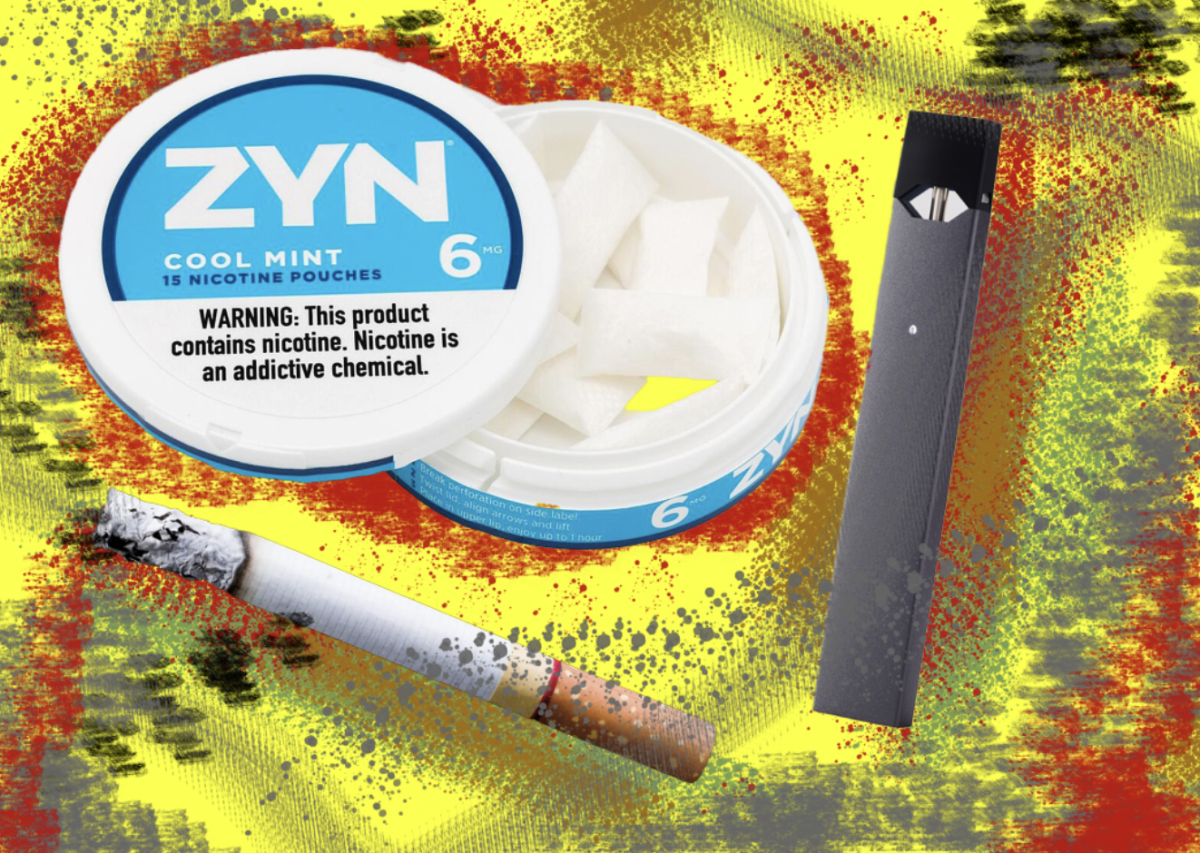On October 17th, 2024, the CDC released news about one of the largest historical public health victories of the 21st century: tobacco use among U.S. adolescents is now at a record low in 25 years. But what factors have contributed to this incredible success? Can the fight against tobacco stop here, or is this just a small battle won in the larger war against youth tobacco use? What can you do to stay tobacco-free against the endless external forces telling you otherwise?
Youth e-cigarette use has dropped to the lowest level in a decade, despite 5.9% of adolescents still using e-cigarettes. While there hasn’t been a significant change in the usage of e-cigarettes among middle school students, high school students tell a different story: In 2023 1.56 million high schoolers used e-cigarettes whereas in 2024 this number is 1.21 million. Essentially, 350,000 fewer high school students used e-cigarettes this year. The numbers don’t lie; high school students have played a major role in this public health victory, which is very impressive considering the mis-information and promotion they face daily regarding tobacco use. “Teens are bombarded with information — including mis- and disinformation — about tobacco products, particularly online,” said Dr. Kristy Marynak, a senior science advisor in the CDC’s Office on Smoking and Health. “Teens themselves deserve credit: they are sifting through it and arriving at the truth: nicotine is addictive and harmful for youth.”
Recent data released by the CDC has revealed both successes and gaps between different demographics. For example, tobacco use has declined significantly among American female teens. Additionally, certain tobacco product usage among Hispanic teens has declined. However, the usage of nicotine pouches has increased significantly among White American teens. “We’re headed in the right direction when it comes to reducing tobacco product use among our nation’s youth,” said Brian King, Ph.D., M.P.H., director of the FDA’s Center for Tobacco Products. “But we can’t take our foot off the gas. Continued vigilance is needed to continue to reduce all forms of tobacco product use among youth. Addressing disparities remains an essential part of these efforts to ensure that we don’t leave anyone behind.”
As a result of the new declines in tobacco use among teens, the tobacco industry is left to find new product alternatives that are non-combustible and that they can market to teens in order to obtain lifelong customers. Many teens are deceived into believing that smokeless products like nicotine pouches aren’t bad for them. However, this is simply false as many of these products contain a gargantuan amount of nicotine, making these products very addictive and serving as a passage into the usage of other addictive and harmful substances. In fact, according to the American Lung Association, the average amount of nicotine ingested each day by a person using Zyn would be equal to smoking approximately 3 packs of cigarettes or 1 ½ e-cigarette pods of 2% vape juice. Additionally, a 2022 study of 44 nicotine pouch products found that 26 of the samples contained cancer-causing chemicals and several other chemicals such as ammonia, chromium, formaldehyde, nickel, pH adjusters, and nicotine salt. Products like Zyn, On!, and Velo have been implementing marketing strategies, like the introduction of new flavors, that intentionally target teens.
“In the last 25 years there has been a massive culture shift rooted in the scientific fact that smoking and secondhand smoke exposure kill,” said Dr. Marynak. Several notable smoke-free policies have been implemented in the past 25 years, too, including smoke-free policies on flights, tax increases on tobacco products, and the mass implementation of smoke-free policies in public places. In addition to major successful public policy, tobacco-free campaigns such as the Food and Drug Administration’s (FDA) “The Real Cost” Youth E-Cigarette Prevention campaign have emerged. With effective messages on the dangers of e-cigarettes, the campaign reaches about 90% of American adolescents. These effective policies and campaigns over the past few decades have shifted America’s youth to adopt a negative attitude about tobacco products, which propels the decline in tobacco use among American teens. However, a battle won doesn’t mean the war is done. “Reaching a 25-year low for youth tobacco product use is an extraordinary milestone for public health. However, with more than 2 million youth using tobacco products and certain groups not experiencing declines in use, our mission is far from complete,” said Deirdre Lawrence Kittner, Ph.D., M.P.H., director of the CDC’s Office on Smoking and Health.”
If you or someone you know is suffering from addiction, here are some resources to help:








